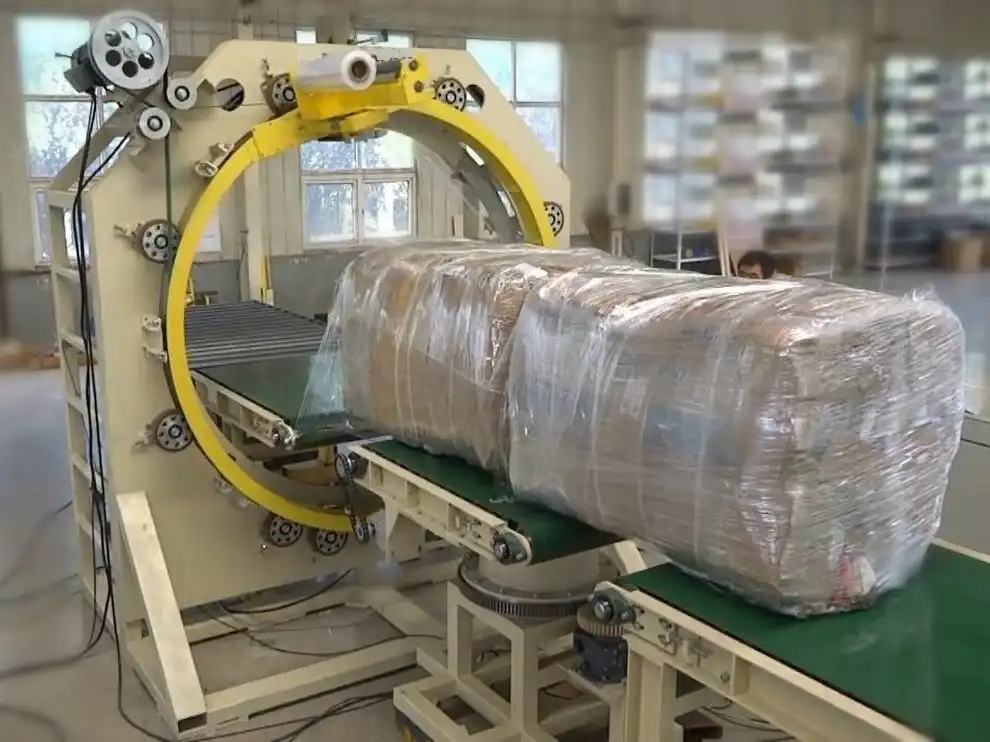Optimizing Furniture Packaging: A Guide to Automatic Stretch and Orbital Wrappers
Protecting furniture during transit and storage is a critical challenge for manufacturers and distributors. Scratches, dents, and environmental damage can lead to costly returns and dissatisfied customers. Automatic wrapping machines, specifically automatic furniture stretch wrappers and orbital wrapping machines, offer efficient and reliable solutions to safeguard large, bulky, or irregularly shaped items.
This guide explores these essential packaging technologies, their features, benefits, and applications within the furniture industry.
Why Automate Furniture Wrapping?
Manual wrapping is often time-consuming, inconsistent, and labor-intensive. Automating the process brings significant advantages:
- Consistency: Ensures uniform wrapping tension and coverage for every piece, enhancing protection.
- Speed & Efficiency: Significantly increases packaging throughput compared to manual methods.
- Material Savings: Precise control and film pre-stretch capabilities reduce film consumption.
- Labor Optimization: Frees up personnel for other value-added tasks.
- Damage Reduction: Secure wrapping minimizes movement and protects surfaces from abrasion, moisture, and dust.
Understanding the Technologies: Stretch vs. Orbital Wrapping
While both systems apply protective film, their methods differ, making them suitable for distinct applications.
Automatic Stretch Wrapping
Typically, these machines use a rotating turntable or a rotating arm that moves around a stationary load. Stretch film (often Linear Low-Density Polyethylene - LLDPE) is applied under tension, securing the item. This method is highly effective for:
- Boxed or palletized furniture items.
- More uniformly shaped pieces.
- Situations where the entire item needs cocooning.
Orbital Wrapping (Horizontal Wrapping)
An orbital wrapping machine operates differently. The furniture piece passes horizontally through a rotating ring carrying the stretch film roll. The ring applies the film around the product's circumference. This makes horizontal orbital wrappers ideal for:
- Long items (e.g., doors, window frames, panels, disassembled furniture components).
- Bulky or irregularly shaped furniture (e.g., sofas, assembled chairs).
- Products requiring banding or partial wrapping rather than full encapsulation.
Video demonstrating an automatic orbital wrapping process for large items.
Key Features and Considerations
When evaluating an automatic furniture stretch wrapper or orbital wrapping machine, consider these features:
- Machine Configuration: Primarily horizontal for orbital wrappers handling long furniture items. Stretch wrappers can be turntable, rotating arm, or robotic.
- Wrapping Parameters:
- Adjustable Tension Control: Crucial for protecting delicate surfaces while ensuring load stability.
- Film Pre-Stretch: Maximizes film yield (often up to 250-300%), reducing costs. Learn more about LLDPE film properties (External link example - replace with a relevant, authoritative source).
- Variable Speed: Allows adjustment based on product type and line speed.
- Wrapping Programs: Customizable patterns (e.g., full wrap, banding, reinforced wraps) accommodate diverse product needs.
- Automation Level: Options range from semi-automatic (requiring operator initiation) to fully automatic systems integrated with conveyors for seamless production flow.
- Safety Features: Essential components include light curtains, safety fencing, emergency stops, and clear operator interfaces, adhering to industry safety standards (See resources from organizations like PMMI - External link example).
- Ease of Use & Maintenance: Look for intuitive controls (often touchscreen HMIs) and straightforward maintenance requirements.

six sides automatic horizontal stretch wrapper Applications in the Furniture Industry
These machines are versatile tools used across various furniture segments:
- Upholstered Furniture: Wrapping sofas, armchairs, and ottomans to protect fabric and form.
- Case Goods: Securing cabinets, dressers, tables, and bookshelves.
- Doors and Windows: Protecting long, flat items from scratches and damage during handling.
- Panels and Components: Wrapping raw or semi-finished wood panels, laminates, or furniture parts.
- Office Furniture: Packaging desks, chairs, and partitions.
- Outdoor Furniture: Protecting items from environmental factors during shipping and storage.
Choosing the Right Machine
Selecting the optimal wrapping solution depends on:
- Product Characteristics: Size, shape, weight, and fragility of the furniture. Orbital wrappers excel with long or irregular items.
- Throughput Requirements: How many pieces need wrapping per hour or shift?
- Packaging Needs: Full containment, banding, or specific protection zones?
- Level of Automation: Integration with existing production lines?
- Budget: Balancing initial investment against long-term savings in labor and materials.
Conclusion
Automatic furniture stretch wrappers and particularly horizontal orbital stretch wrappers are indispensable in modern furniture manufacturing and logistics. By providing consistent, efficient, and protective packaging, they help ensure products reach the end customer in perfect condition, reducing waste, controlling costs, and enhancing brand reputation. Evaluating your specific needs against the capabilities of stretch and orbital wrapping technologies will lead to the most effective packaging automation strategy for your operation.